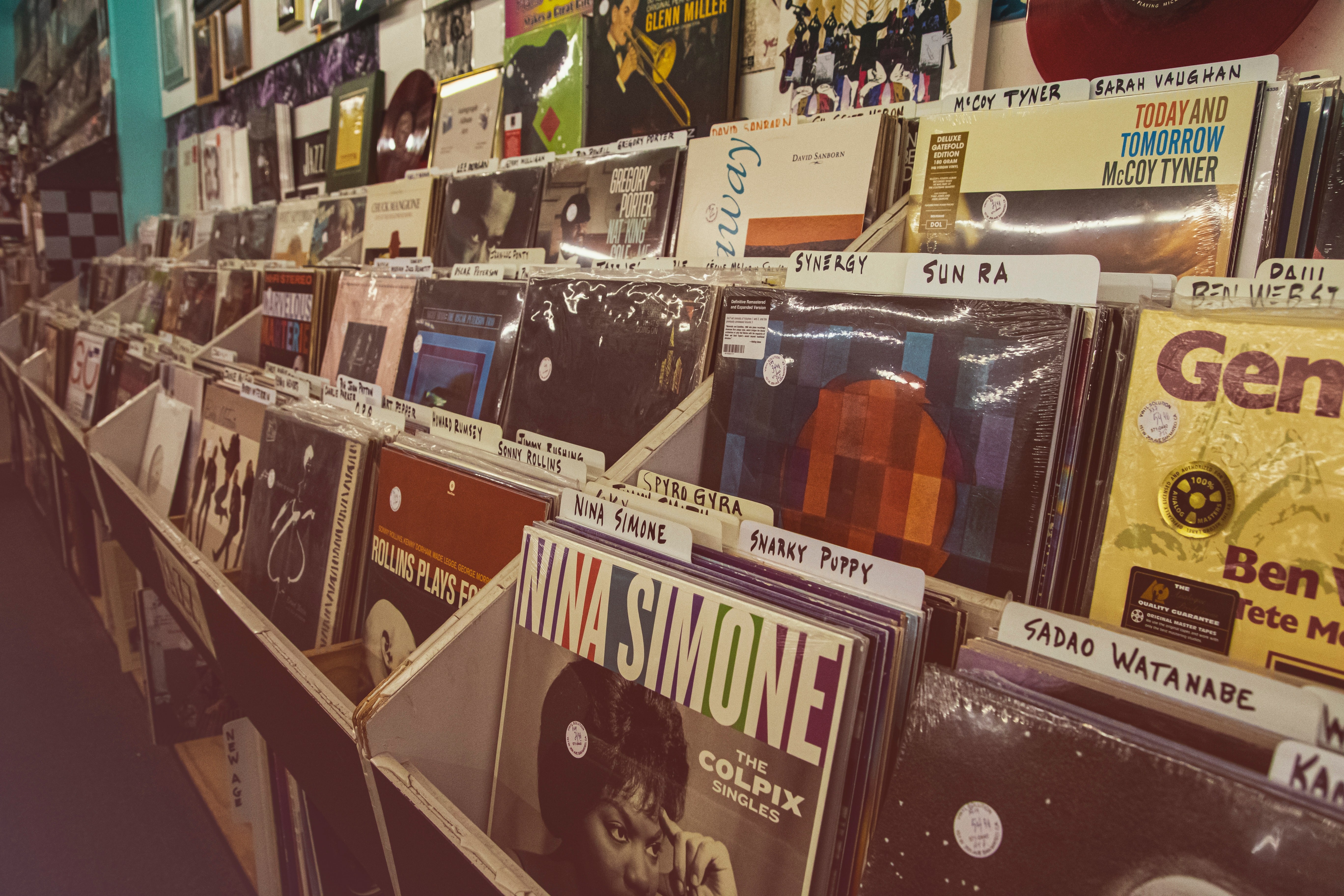

Dec 02, 2021
Oral storytelling and the spoken word is one of the oldest forms of narrative. Oral traditions and history passed down through generations. But the future of audio is so much more than just the evolution of stories told around the fire. Technology has driven innovation, changing what and how we consume and create.
Driven partly by the pandemic, a new golden age of audio is upon us. At home most, if not all of the day, consumption habits changed, with audio content and listenership numbers rising rapidly. People turned to podcasts and music to create a soundtrack for the day to day. Connected devices (like Alexa) helped that soundscape travel from device to device and room to room, creating a virtually hands-free experience. Listening served anytime, anywhere.*
Audio delivers the ability to reach millions of people all at once, connecting with consumers at the right time, in the right moment.
*38% of UK adults own a smart speaker, and, according to Nielsen data, in a typical week 90% use it for music, and 37% have listened to a podcast in the last month.

Neurological studies have shown the power of audio. Listening engages a storm of neural networks in the brain, including those that control motor actions, emotions, and creativity. Audio has the power to connect you with your audience in a deeply emotional and sensory way. With audio you can evoke a mood, an emotion or a memory. (There’s even research being done into the potential health benefits of ASMR, and Slovenians have used the sound of bees to alleviate anxiety and stress since the 18th Century).
From dynamic ad insertions in podcasts, to immersive binaural sound experiences, and everything in between. 2022 is set to be the year of Audio.

Big Tech are betting big on audio being a key part of future revenue growth. During 2020 social audio platforms fought to recreate in-person conversations for the locked-down digital age. Invite-only apps like Clubhouse saw a massive rise to prominence, and an equally sharp decline as the initial hype started to fade. At the height of its popularity Clubhouse had over 9.6 million downloads in February 2021. The app offered opt-in audio spaces with various levels of privacy. But by August Clubhouse was struggling. Reports of misogyny, mansplaining and trolling were rife, and competitor platforms from the likes of Discord, Twitter and Facebook were starting to take market share.
Facebook launched a direct competitor to Clubhouse in June 2021. Live Audio Rooms enables public figures to host discussions in their messenger app. Anyone can be invited up as a speaker with up to 50 people able to speak at once, and there’s no cap on the number of listeners allowed in. Also getting in on the action are: Spotify’s Greenroom, Stages from Discord, Reddit Talk and Twitter Spaces.
Slack has introduced Huddle, an audio room which allows people to move in and out fluidly as if to replicate a real working environment and encourage more casual workplace conversations in remote work.
Apple is implementing a more holistic approach to audio guided by a more mindful and meaningful use of technology. Their long term strategy aims to consider inclusiveness, health, wellbeing and ecosystem integration. FaceTime has already received an update with the use of Spatial Audio for more natural sound, the option to isolate your voice which helps those who are slightly hard of hearing, auto translation capacities and a new feature called SharePlay which allows users to watch videos or listen to music together.

Sonic branding isn’t new, but some brands are embracing the full potential of multi-platform audio. Leaders in the space are Mastercard who’ve developed a sonic brand architecture, including: a sonic logo and music single recorded with Nadine Randle. Mastercard’s own research claims that 77% of customers believe the sound makes transactions and retail environments "more trustworthy".
Coca-Cola’s sonic toolkit is legendary. From the sound of the bottle opening, the fizz, the aah to five-note sonic logo at the end. And if I said to you the iconic advertising phrase “holidays are coming”, I’ll bet you’ve now got the opening bars of a Coca-Cola Christmas advert running like an ear worm through your brain. (You’re welcome).
Nurofen has a new take on sonic branding, releasing a non-pharmacological treatment to help people better tolerate pain relief. ’Tune out Pain’ invites sufferers to head over to Spotify rather than the pharmacy and listen to a custom track designed to distract the brain from sending pain signals.

While podcasts have been around since 2004, they’ve generated a lot more interest in recent years. 18% of us listened to podcasts each week in 2020, which is double the number who listened two years previous and up from just 1% in 2015.
Estée Lauder have partnered with the New York Times podcast Modern Love to create a “story-first” advertising campaign for their new fragrance, Magnolia. They’ve taken an audio-first approach on the basis that it seemed apt to appeal to listeners with a product which is concerned with memory and mood in the same way as audio storytelling.
The Mandarin Oriental hotel group have tapped into the desire for lockdown escapism with a podcast series. A love story to some of the amazing Mandarin Oriental locations, this series of short story podcasts is led by some famous names, like novelist William Boyd and former British Vogue editor Alexandra Shulman.
DIY radio stations across the UK such as Foundation FM, NTS, Rinse FM and Reprezent are on the rise, providing a counter-cultural alternative and giving women and BIPOC creators the space to flourish in a heavily white male-dominated environment.
Artist-run radio station RTM FM operates as a communal hub, offering the opportunity for those in the community to learn new skills in broadcasting, production and presenting.

Musicians, artists and radio stations in Palestine have been using audio as a means to resist the occupation. Their protest is borne out through freestyle rap, sonic art, sampling the sound of bullets in their music and even radio silence. For many, it has also become a means to work through the trauma induced by living under siege.
Brian Eno has launched a new radio station, The Lighthouse, which will serve as a living discography of Eno’s work. An entirely new station format, it is both an archive and a platform for new releases and gives listeners exclusive access to his music in high-definition audio.
The Lost Tapes of the 27 Club used AI to create music lost to humanity through music’s mental health crisis. “As long as there’s been popular music, musicians and crews have struggled with mental health at a rate far exceeding the general adult population. And this issue hasn’t just been ignored. It’s been romanticized, by things like the 27 Club—a group of musicians whose lives were all lost at just 27 years old. To draw attention to this issue, we used AI to imagine what these artists might have created, were they still with us.”
Listen to the tapes here.

Audio Up is a media company who create podcasts with a narrative and original scores featuring artists like Machine Gun Kelly, described by its CEO-founder Jared Gutstadt as “movies for your ears”.
Radiohead have teamed up with Epic Games to create a virtual exhibition that is part gaming experience and part weird trip into a fantastical soundscape. Kid A Mnesia has been designed to replace a real-world event and is curated based on their expansive new three-volume release. The fantastical 3D art gallery blends music from Kid A and Amnesiac (including new sound design from Nigel Godrich) with the unsettling artwork of Thom Yorke and Stanley Donwood.
Sonic Boom is a colourful installation designed to explore how people communicate through the interaction of sound. Conceived by Japanese artist Yuri Suzuki, the sculpture consists of a central tube of red, yellow, and blue horns that amplify street noises. Sonic Boom can pick up general urban sounds; passers-by, leaves rustling, or birdsong, but the ultimate aim is to use this interactive installation to generate community focussed discussion and pave the way for social connectivity during social distancing.

To coincide with the launch of his album Donda in August 2021, Kanye West created an interactive audio player which splits songs into their component parts and allows users to create highly personalised remixes of their favourite tracks. Users can adjust the speed and create audio loops in real time, before saving and sharing their custom mixes with friends.
Dating app Hinge has added a new Voice Prompts feature that allows users to exchange voice notes and add audio-based Prompts to their profiles. Voice Prompts have received a mixed reaction so far, with some shared prompts going viral for their cringe factor.
Dishtory is a recipe app that aims to use the power of storytelling in combination with the nostalgic and emotional appeal of family memories by allowing people to record, save and share kitchen memories and recipes. They refer to these sound files as ‘audio heirlooms’ and promise to keep them safe ‘forever’.
Factoring audio into your strategy, innovation and marketing will ensure you’re reaching the broadest possible audience. In the next 5 years it’s no longer going to be a nice to have but a hygiene factor. But it’s not as simple as pivoting your existing content into an audio realm. Future Audio has the potential to deliver engaging, immersive, exceptional experiences that connect emotion and build empathy. Remember, audio gives you the opportunity to speak directly to your audience. Use this power wisely.
What would a sonic brand sound like for your organisation? How and where could you leverage this asset to get brand recognition and cut through?
You’ve pivoted your IRL events into a digital space. Now make the transition into audio. How can you make your digital mass participation more immersive?
In Future Communities we talked a lot about going to where your audience is convening. What does this look like within the social audio space? Where do you need to go to connect with and listen to your audience? What’s the right platform(s) for you?
Does your organisation already have a podcast? Does it really need a podcast? Does this podcast have something new and interesting to say? Look again at your content and business strategy for audio, and challenge how you’re using it. Podcasting can be a powerful medium to build empathy but think hard about the audience you’re trying to connect with.
.....
If you haven’t discovered them yet, go back through the links in this article to discover the audio easter eggs. And here’s the story behind the world’s greatest meme)